КавКазЭтноэксп. VIII. Армения. Часть II. Гюмри, Варденис, Спитак, ВанадзорCauKazEthnoexp. VIII. Armenia. Part II. Gyumri, Vardenis, Spitak, VanadzorНа карте мира Map28, 29, 31 июля 2010 July 28, 29, 31, 2010 Еще каких-нибудь сто лет назад армяне жили в норах, как египтяне в Луксоре. A mere hundred years ago, Armenians were still living in burrows, like the Egyptians in Luxor. 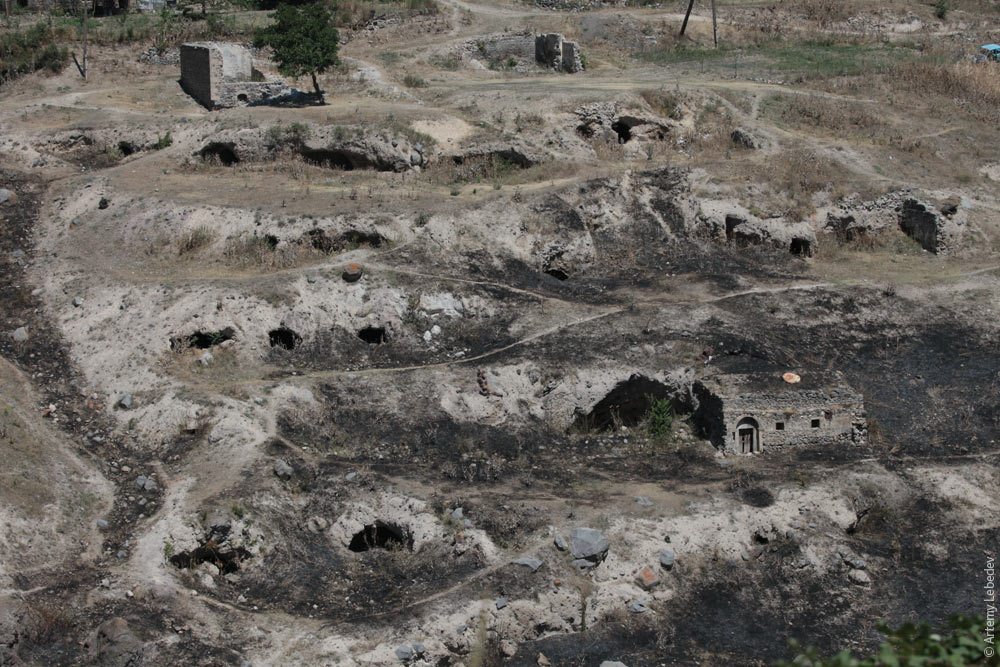 А сегодня в любой счет в ресторане автоматически включаются «услуги за обслуживание». And today, a service charge is automatically included in every restaurant bill. 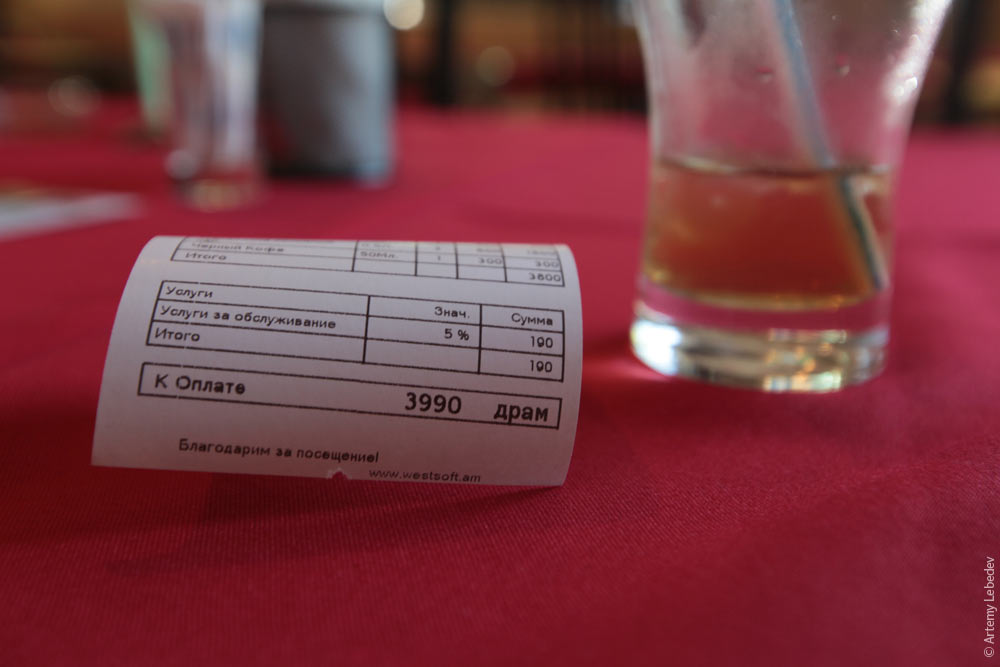 Service charge 5% 190 Армяне не просто не могут забыть турецкий геноцид, а сделали его единственным самым важным эпизодом собственной истории. Все это очень напоминает Абхазию, которая вместо развития полностью зациклилась на прошедшей войне. Почему-то ни одна западная страна (кроме Израиля, пожалуй) не считает основой будущего какой-то один эпизод из прошлого. Геноцид в Армении стал настолько перепроизведенным внутренним продуктом, что у молодого поколения началось отторжение, хотя многие и стесняются об этом говорить открыто. Not only are Armenians unable to forget the genocide by the Turks, they’ve also turned it into the single most significant event of their history. All this is very reminiscent of Abkhazia, which has become completely fixated on the past war instead of moving on. And yet for some reason not a single Western state (except for, perhaps, Israel) considers one particular episode from its past to be the foundation for its future. The topic of genocide has become such an overproduced domestic product in Armenia that it now elicits aversion among the younger generation, although most are hesitant to speak about it openly. 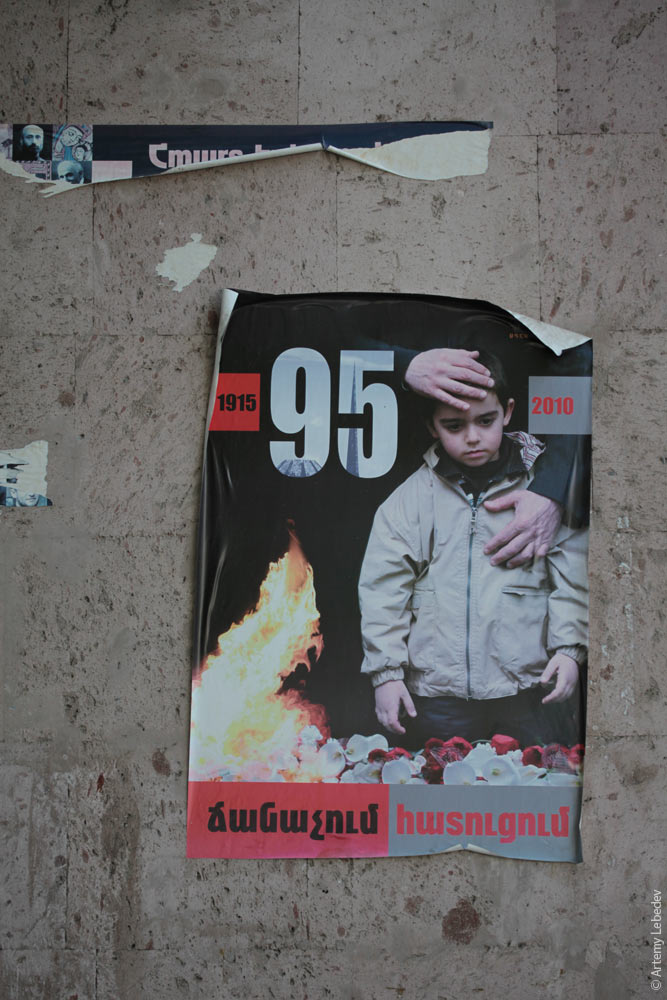 Ремонт ходовой по-армянски называется «ходовик». Running gear repair is called a “runner” in Armenian. 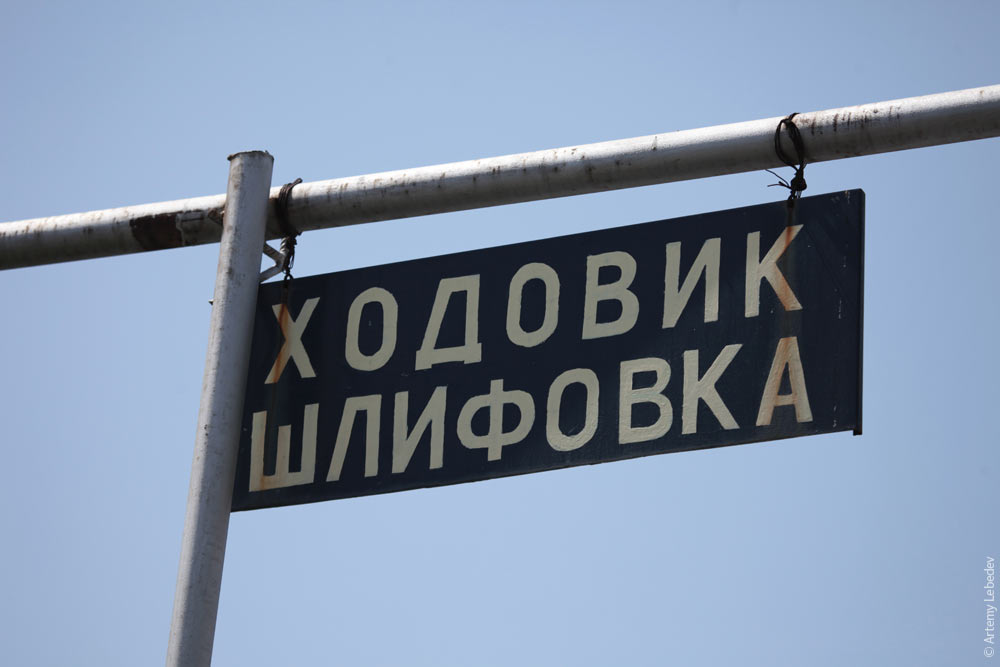 Photo 1: Runner, Grinding. Photo 2: Runner, Tire Repairs Большинство автомобилей ездит на газу. Указатель из газового баллона. Most cars run on natural gas. A directional sign made out of a gas cylinder: 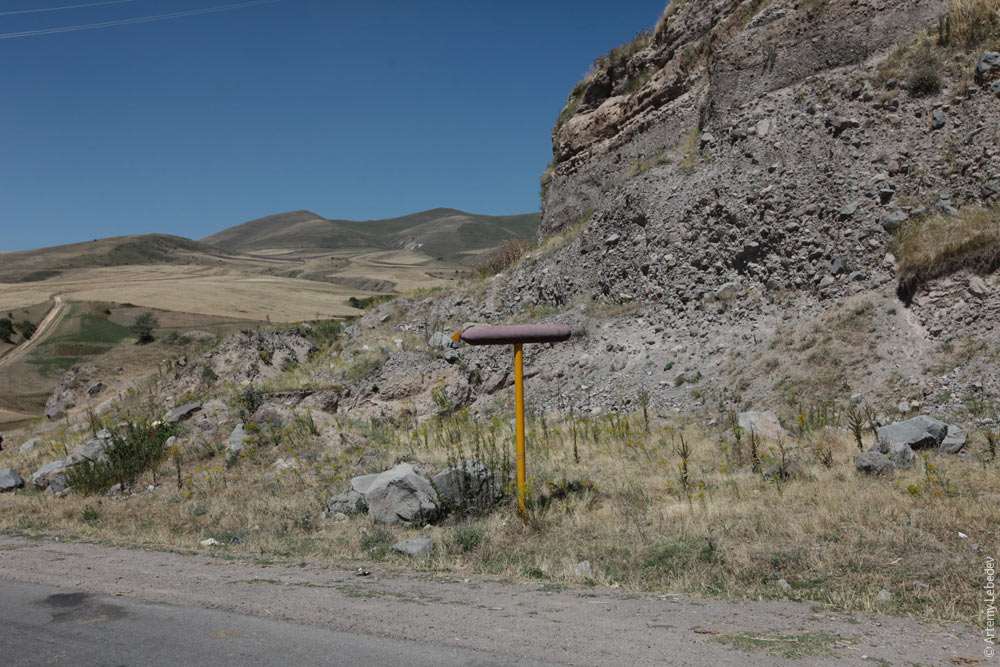 Так как половина машин переделана на газ кустарно, на заправках между колонками обязательны стены — если какая-нибудь машина взорвется, остальные не пострадают. Because half the cars have been converted to run on natural gas by amateurs, all gas stations have walls separating the fuel dispensers—so that if a car explodes, the other ones won’t get damaged. 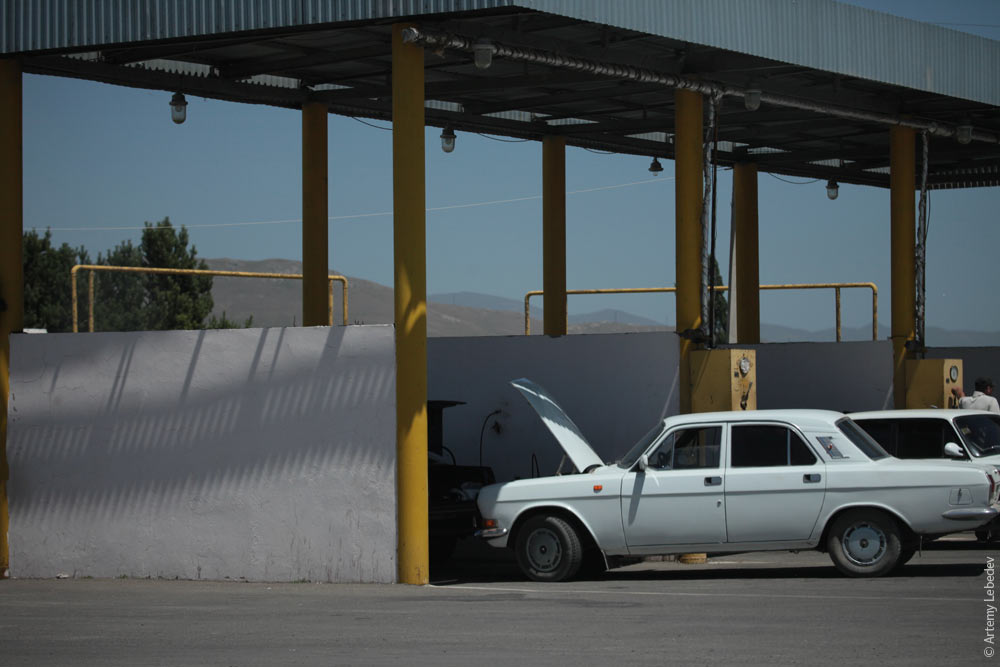 Любопытно, что у милиционеров сохранилась форма советского образца. Curiously, local policemen still wear Soviet-design uniforms. 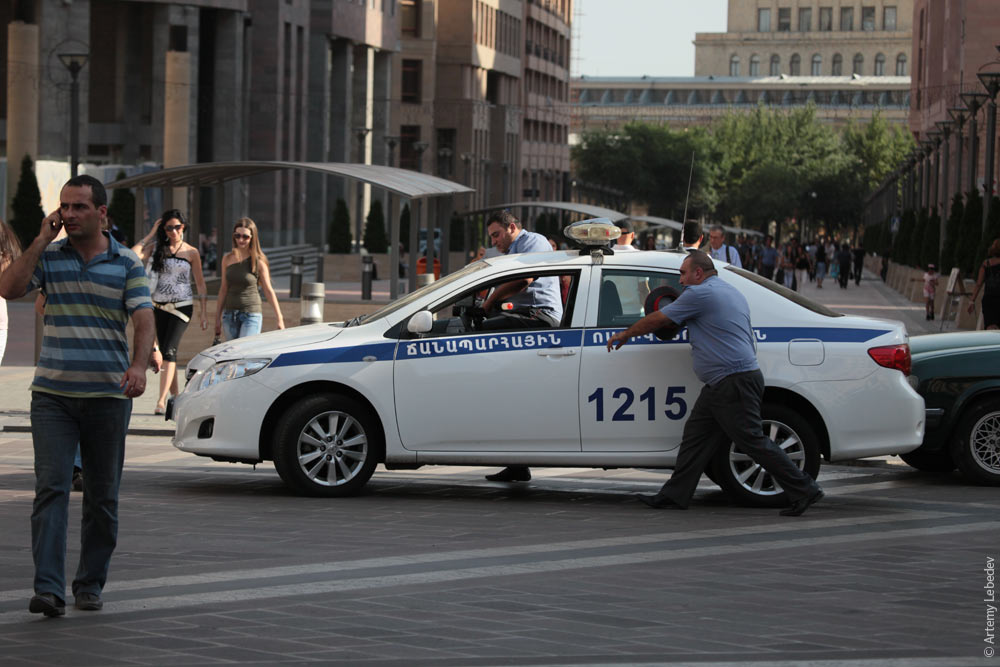 Армения — бедная страна. Поэтому высшим шиком тут считается белая Нива. А самые крутые владельцы белых Нив ставят себе пятилучевые диски с покрашенным ободом. Armenia is a poor country. So a white Lada Niva is considered extremely prestigious here. And the coolest white Niva owners get five-spoke rims with painted lips. 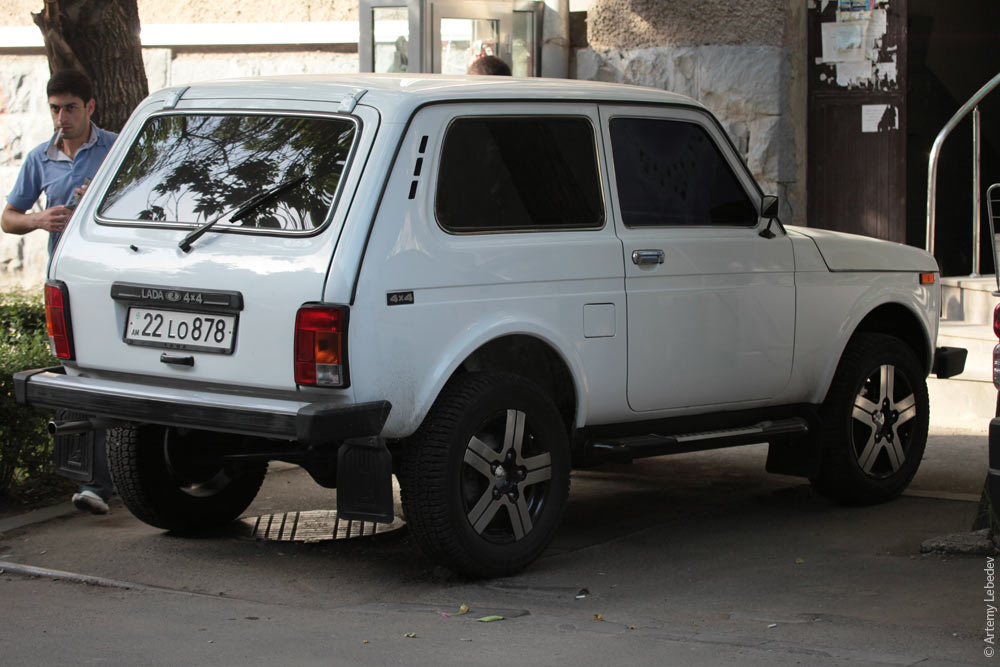 Повсюду закрытые самодельные заправочные киоски. Такие прото-АЗС. There are abandoned hand-built fuel stalls everywhere. They’re like proto-gas stations. 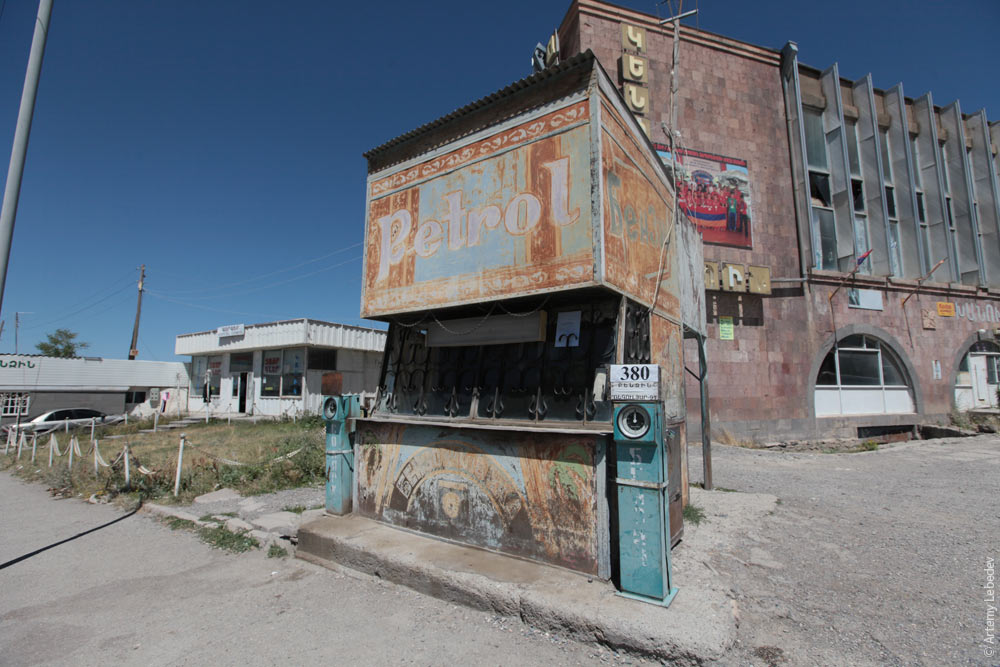 Копатель. A digger. 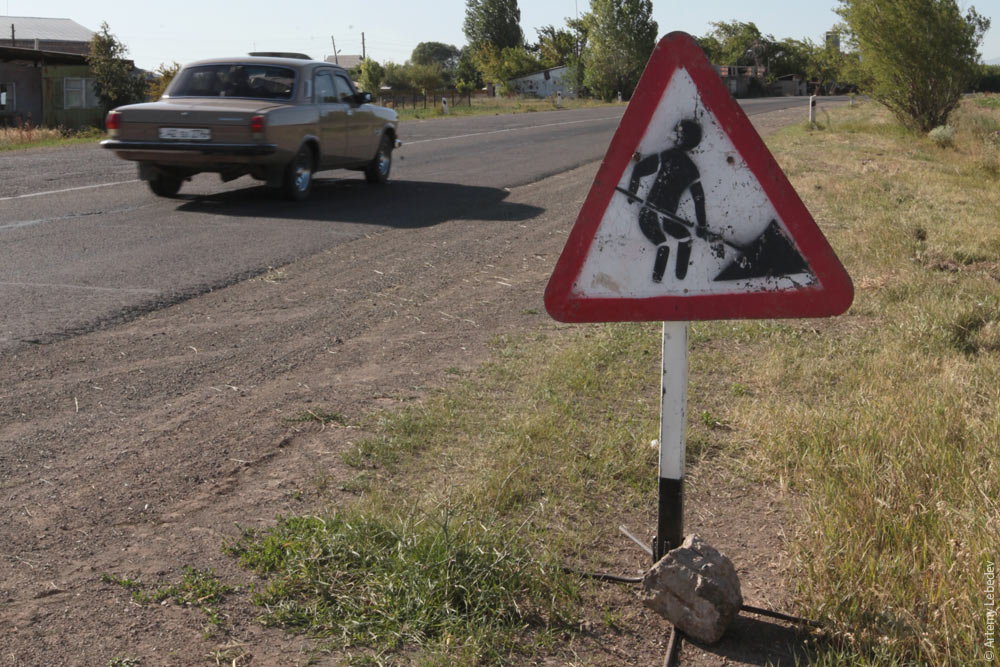 ГюмриGyumriНа карте мира MapГюмри очень напоминает по духу Гянджу — такой же старый русский полусонный низкорослый тихий город. Gyumri is very similar to Ganja in spirit—another old, somnolent, low-rise, quiet Russian town. 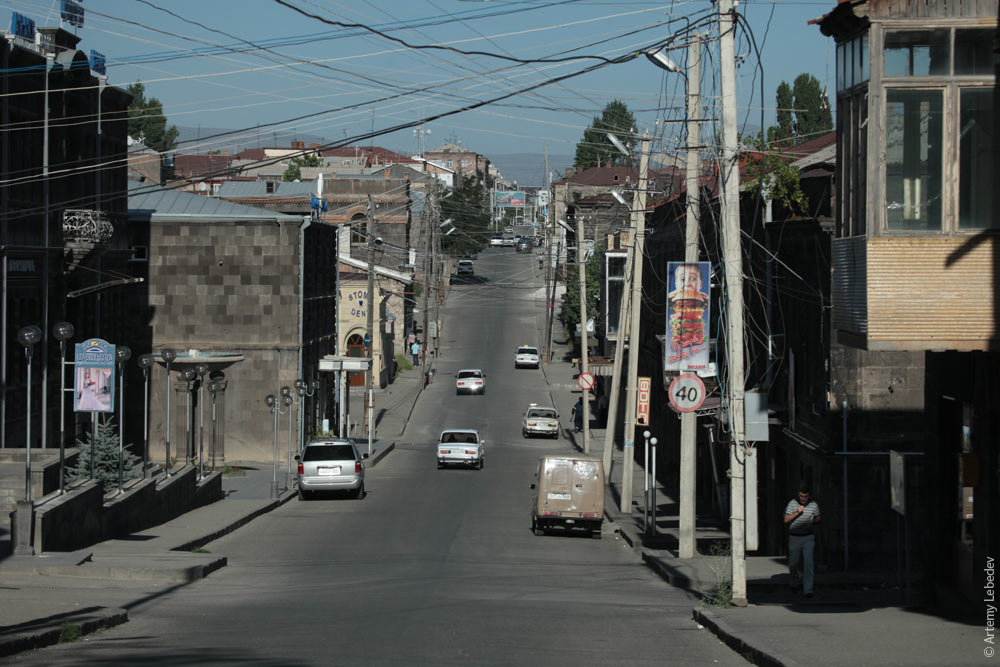 Основа жизни здесь — торговля в киосках. Selling stuff from street stalls is the basis of existence. 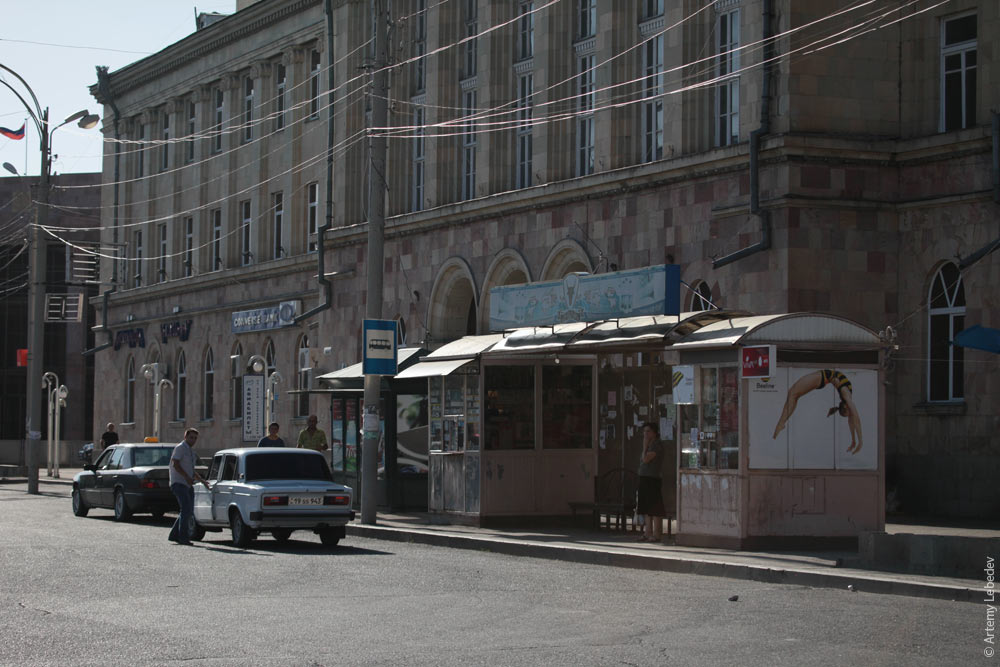 Почтовый ящик. Единственный во всей Армении. Опускать письмо в почтовый ящик не стоит, оно никогда не дойдет (как и в Грузии). Нужно идти на почту и отдавать конверт лично в руки кому-нибудь там. A post box. The only one in all of Armenia. You shouldn’t drop any letters in it— they’ll never get delivered (same as in Georgia). You need to go to a post office and hand your envelope to someone in person. 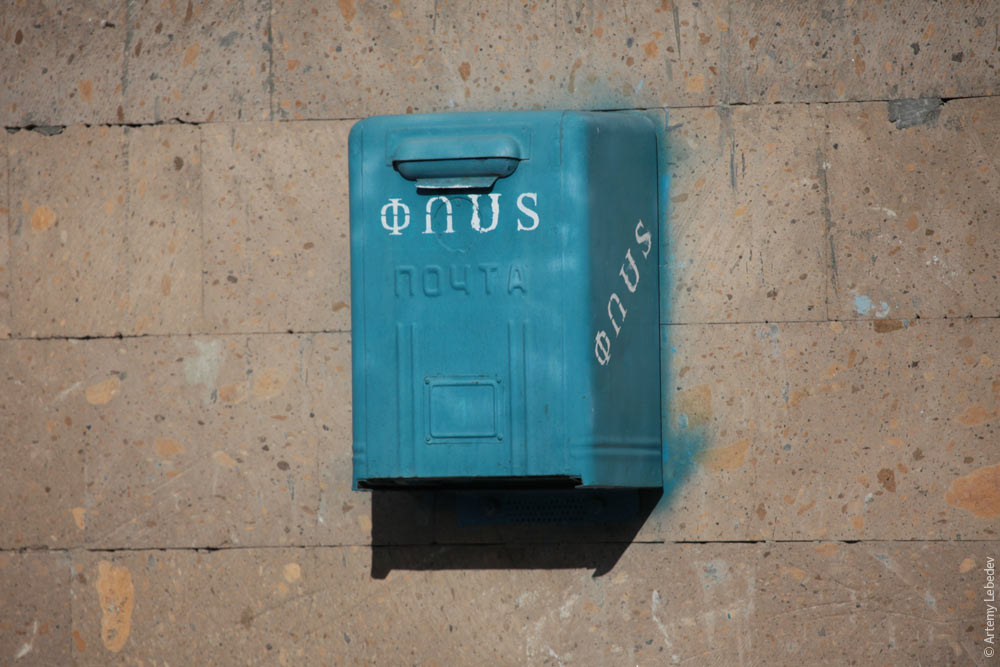 Светофор. A traffic light. 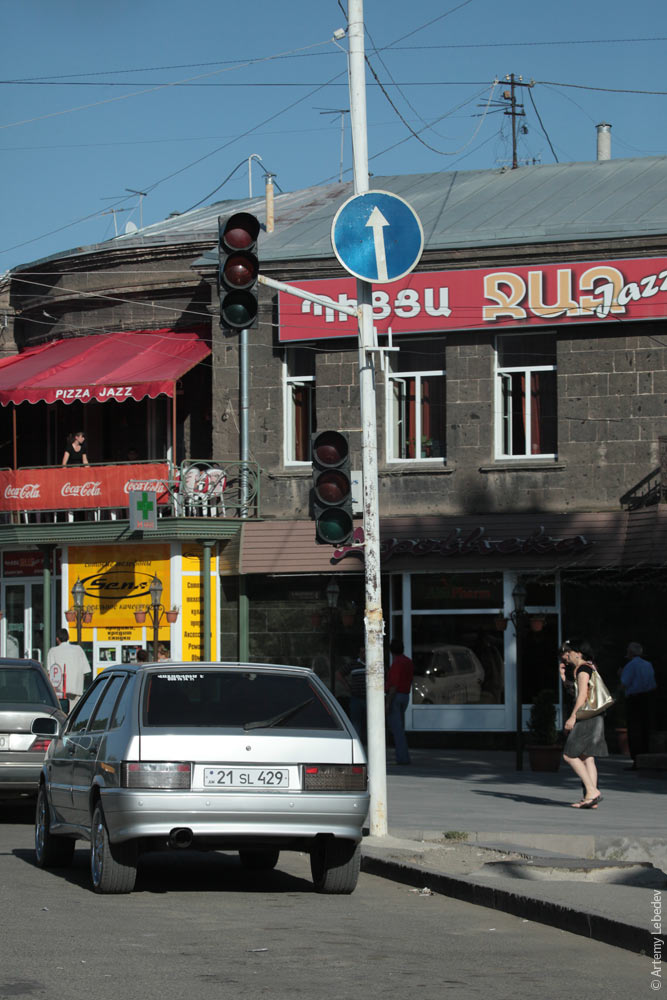 Уличный шкаф с электрическими счетчиками — почти как в Тбилиси. A street electrical box with meters, almost like in Tbilisi. 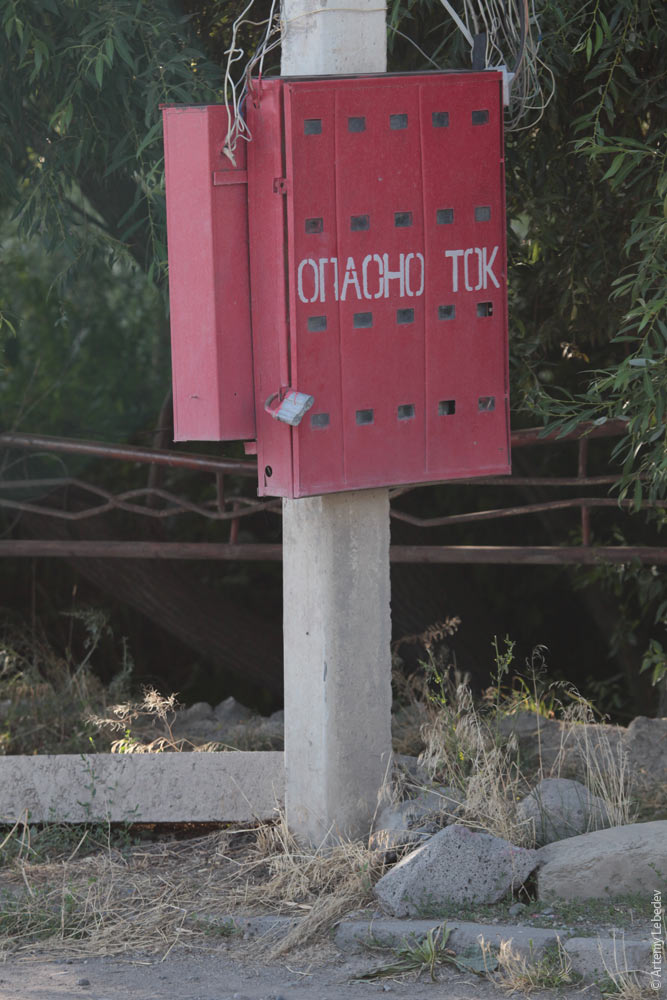 Danger Electricity В Гюмри живет человек-паук. A spider-man lives in Gyumri. 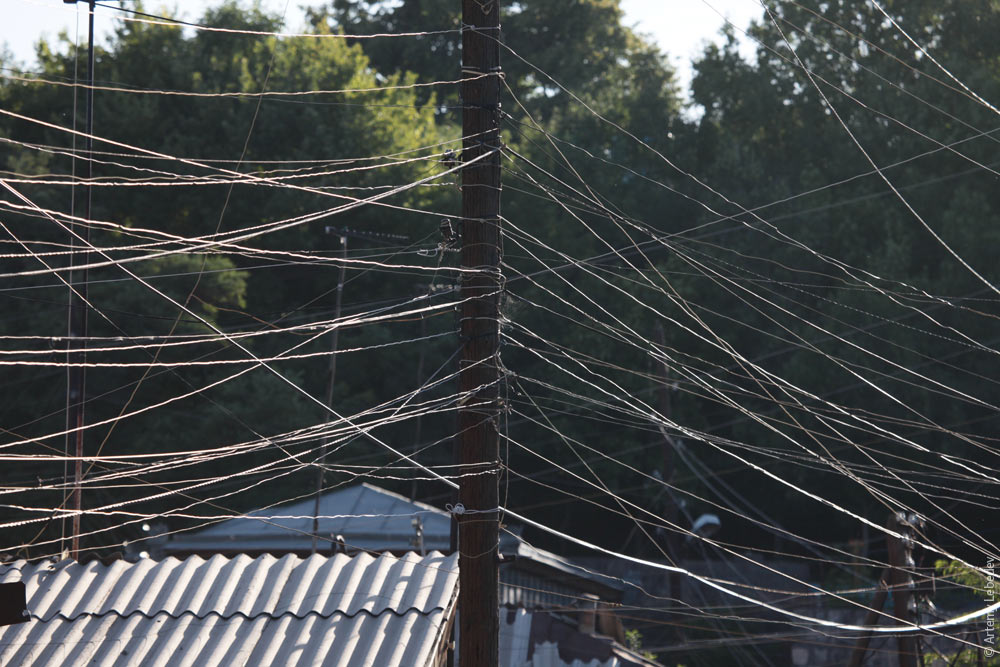 Главная местная особенность, встречаемая, впрочем, и в других местах Армении, — это водосточные трубы, которые расположены максимально перпендикулярно стенам. The main distinctive local feature (which, admittedly, can also be found in other places in Armenia) is the rainwater drainpipes—they’re constructed to be as perpendicular to the walls as possible. 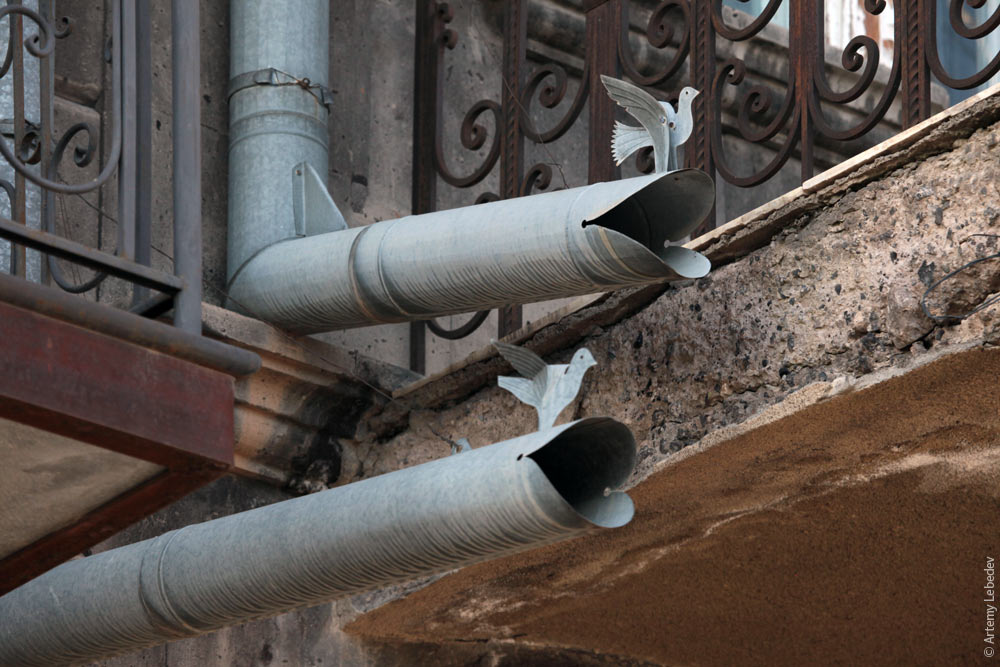 ВарденисVardenisНа карте мира MapЗдесь нашлось работающее почтовое отделение, и мне удалось отправить открытки. I found a functioning post office here and managed to send some postcards. 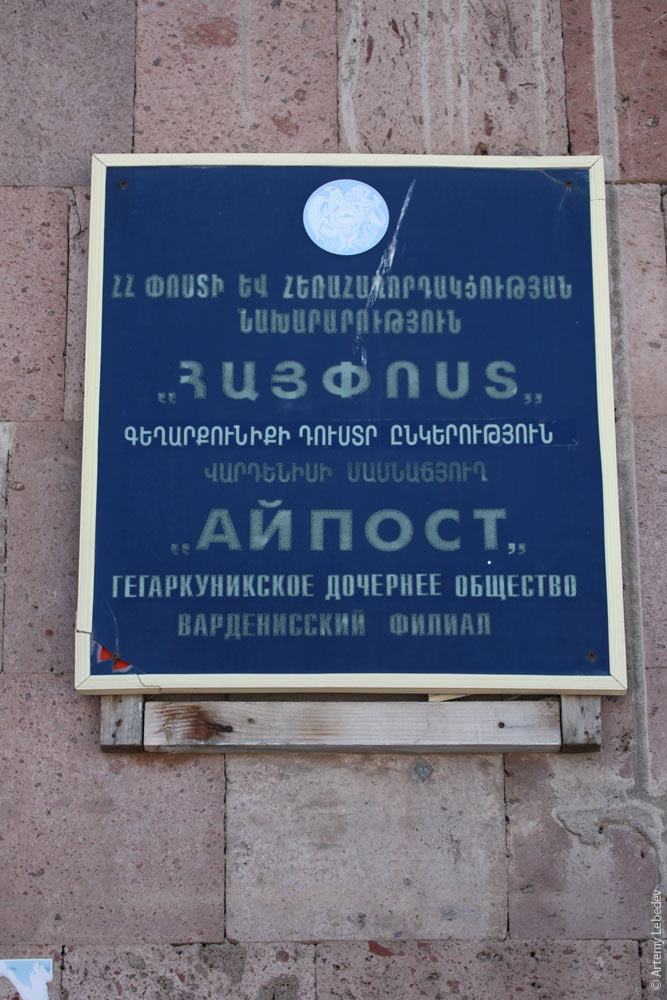 Haypost. A Gegharkunik subsidiary enterprise. Vardenis branch Советский артефакт. A Soviet artifact. 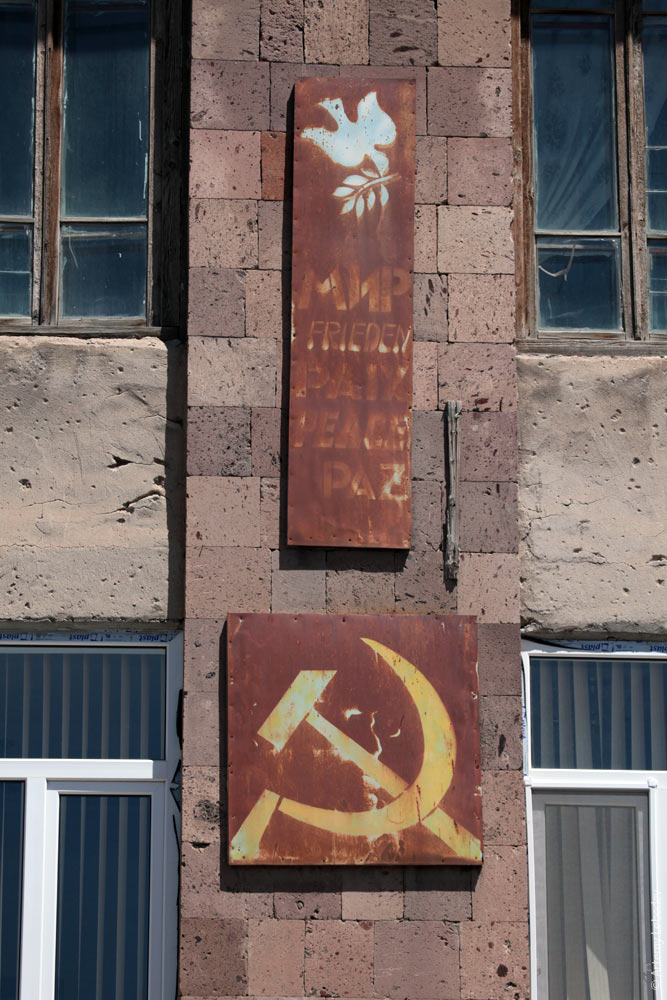 СпитакSpitakНа карте мира MapВ 1988 году город был разрушен землетрясением. In 1988, the city was destroyed by an earthquake. 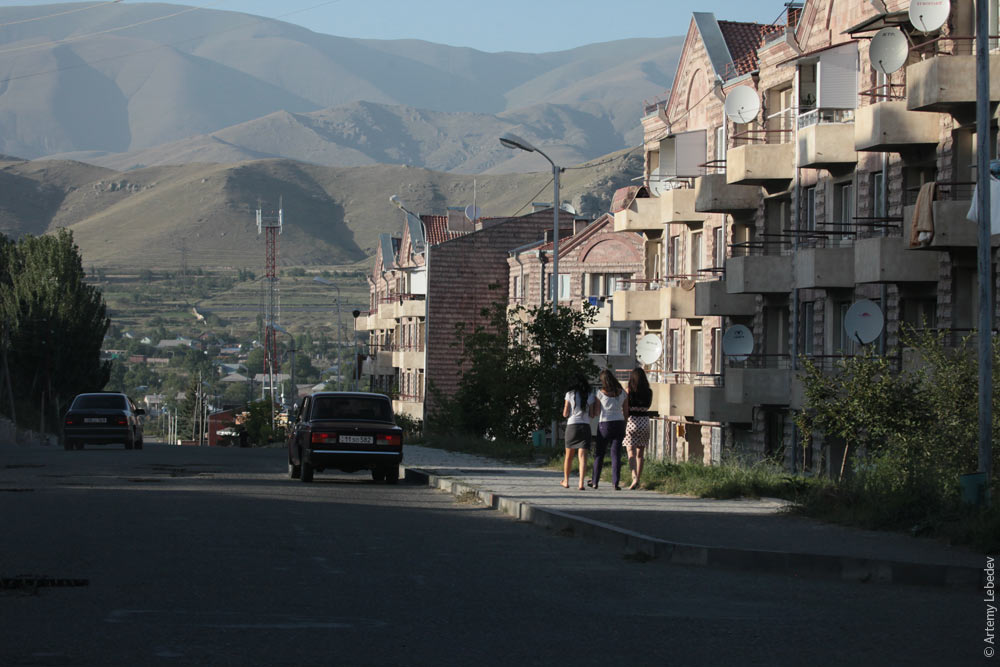 До сих пор многие живут в контейнерах. Many people still live in shipping containers. 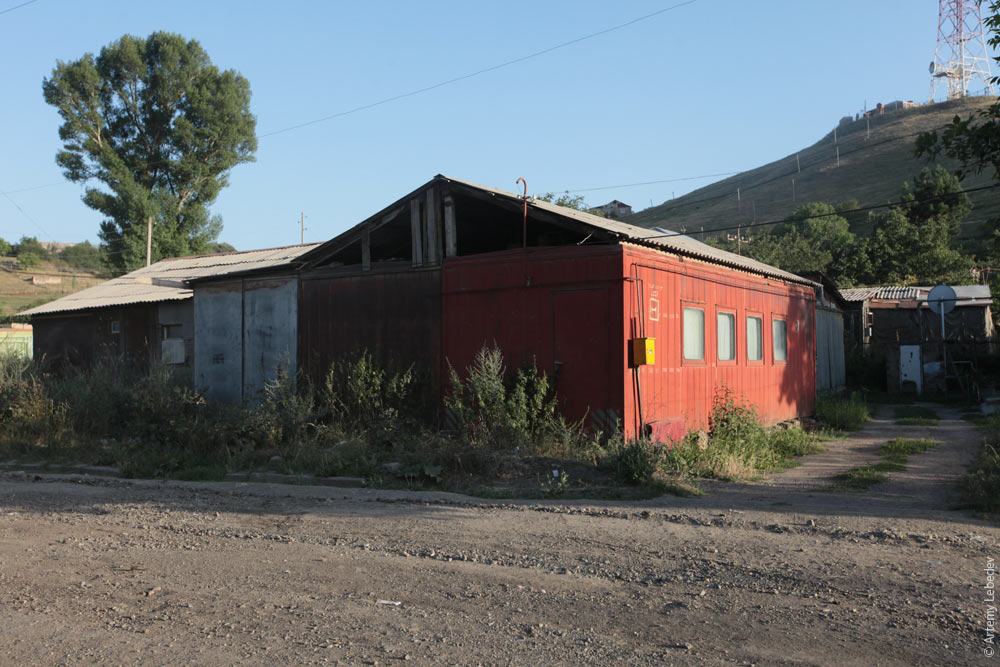 Типичная спитакская урна. A typical Spitak trash can.  Магазин на одной из центральных улиц. A shop on one of the city’s main streets. 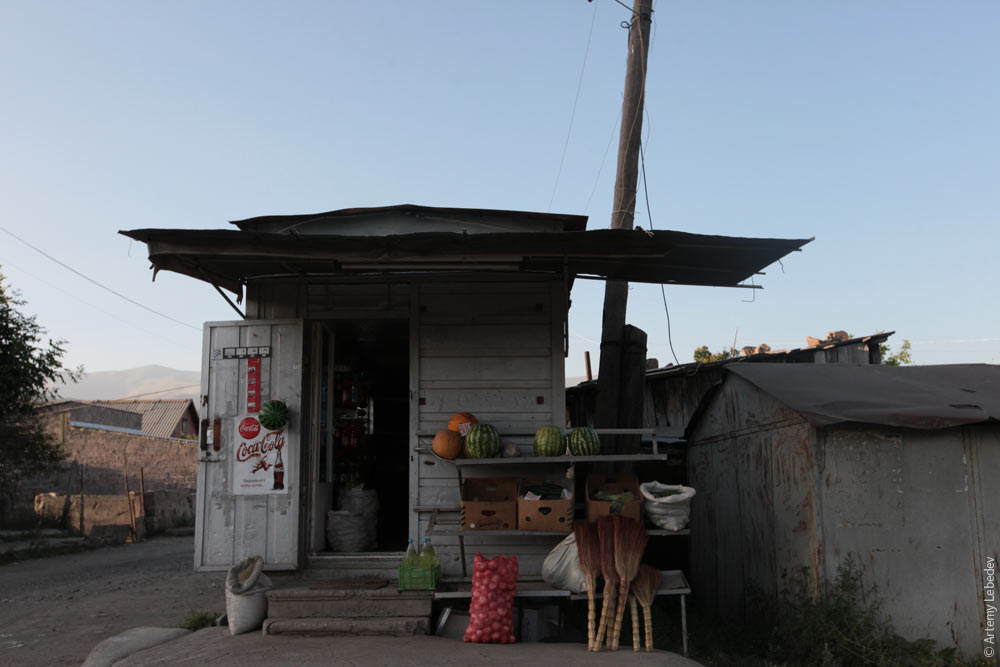 ВанадзорVanadzorНа карте мира MapВысокохудожественные фонари на въезде. Artsy lamp posts as you enter the city. 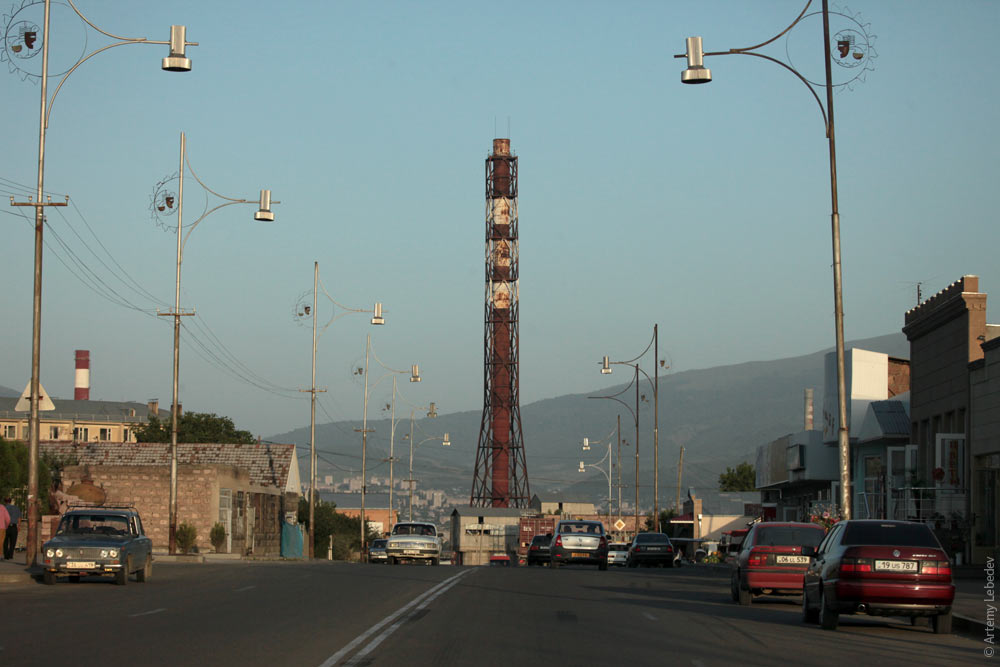 Хотя город, как и вся страна, немного полуразрушен, былое величие еще можно почувствовать. Есть тут что-то приятное в атмосфере. Even though the town, like the rest of the country, is partially in ruins, you can still get a feel of its former grandeur. There’s something pleasant about the atmosphere here. 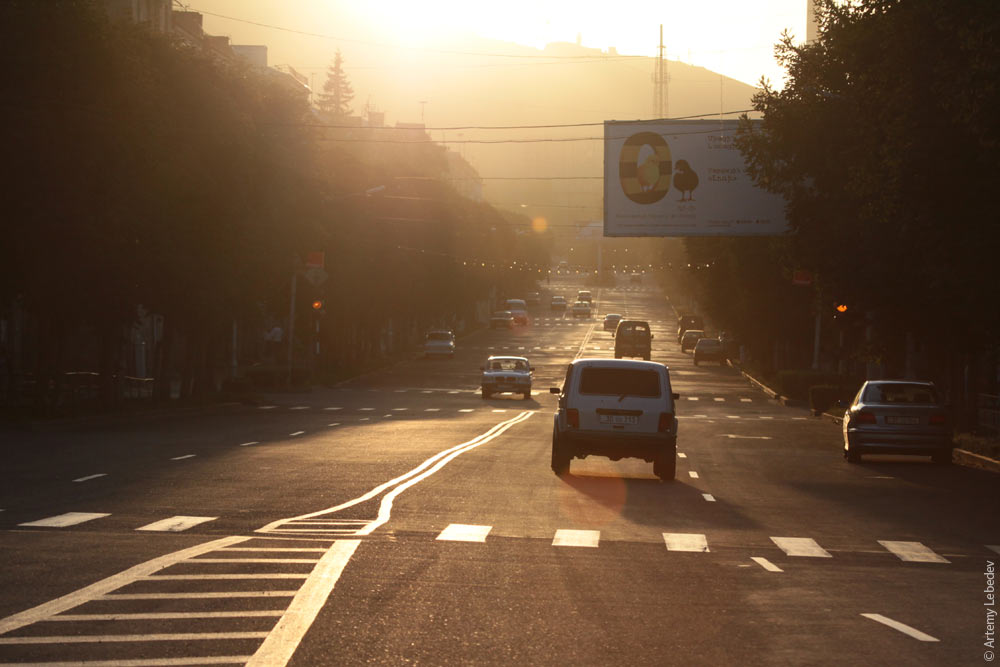 В своих планах по улучшению внешнего вида городов я когда-то придумал вешать дорожные знаки не прямо на столбы, а на некотором расстоянии от них. Даже отступ в 10 сантиметров придаст приятного объема и добавит приятных теней. Оказалось, что так уже давно сделано в Ванадзоре. Почему Ванадзор? Почему не какой-либо другой город в Армении или в остальном мире? Это одна из загадок этнографии. In my plans for improving the appearance of urban environments, I once came up with the idea of hanging traffic signs some distance away from posts instead of directly on them. Even a ten-centimeter offset can add pleasant depth and nice shadows. As it turns out, this has already been done a long time ago in Vanadzor. Why Vanadzor? Why not some other town in Armenia or the rest of the world? That’s one of the mysteries of ethnography. 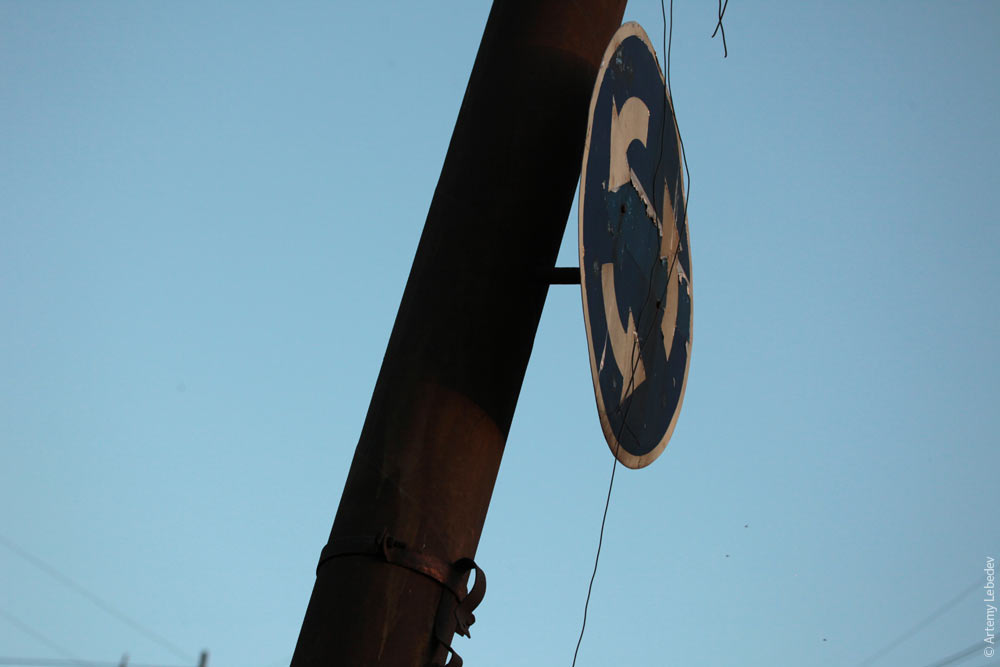 * * * По всей стране стоят деревянные зонтики для отдыха с крышами в стиле куполов армянских храмов. There are wooden shade umbrellas shaped like the roofs of Armenian temples all over the country. 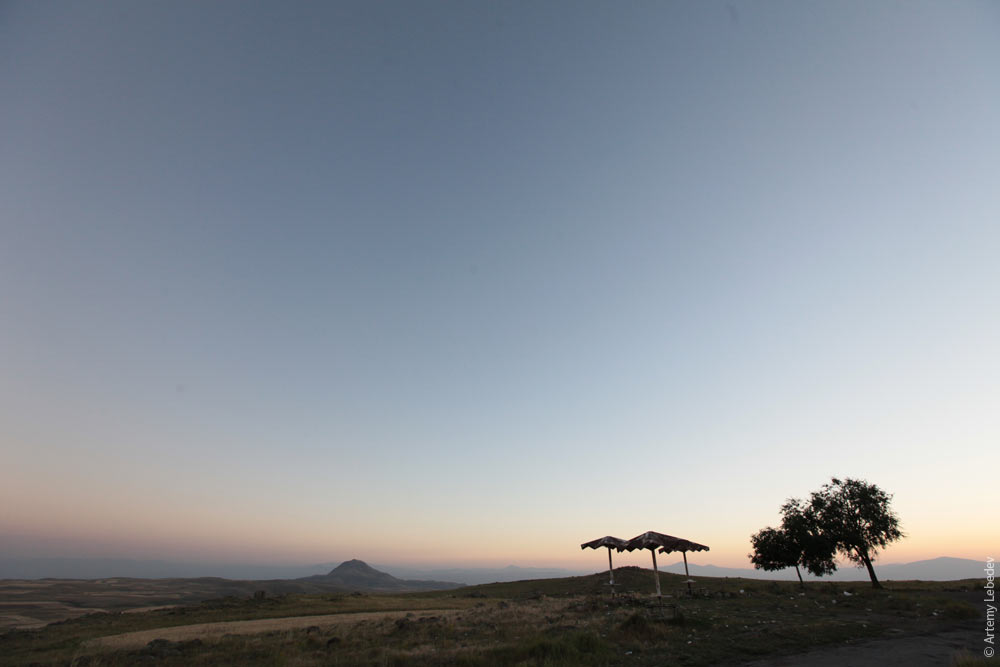 Еще по всей стране на столбах висят рекламные кубы компании сотовой связи «Оранж». There are also ad cubes for the mobile operator Orange on street poles all over the country. 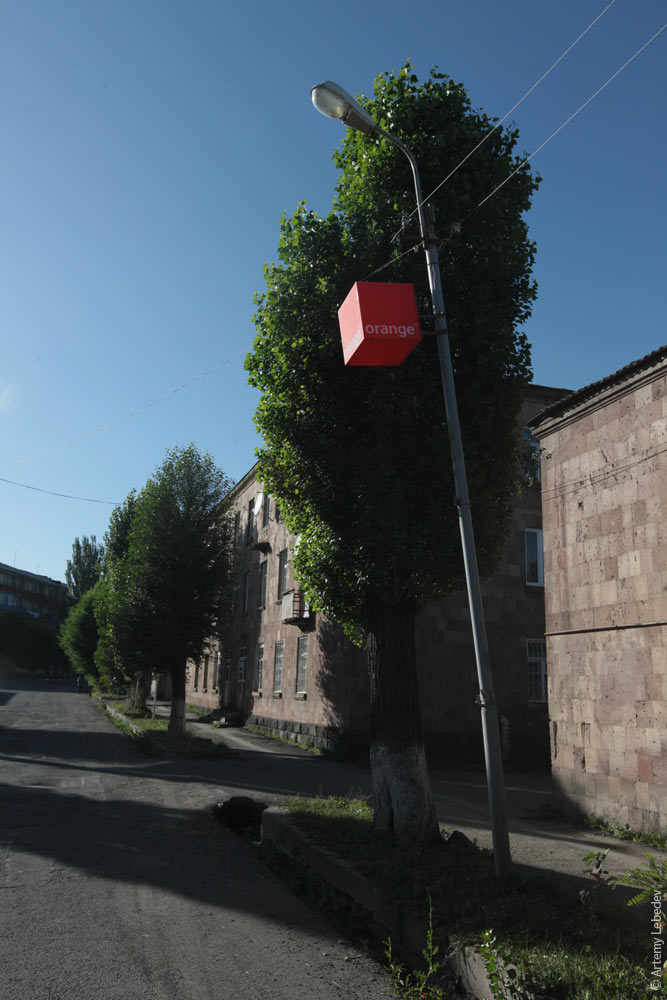 Рекламировать в Армении пока нечего. There’s nothing to advertise in Armenia yet. 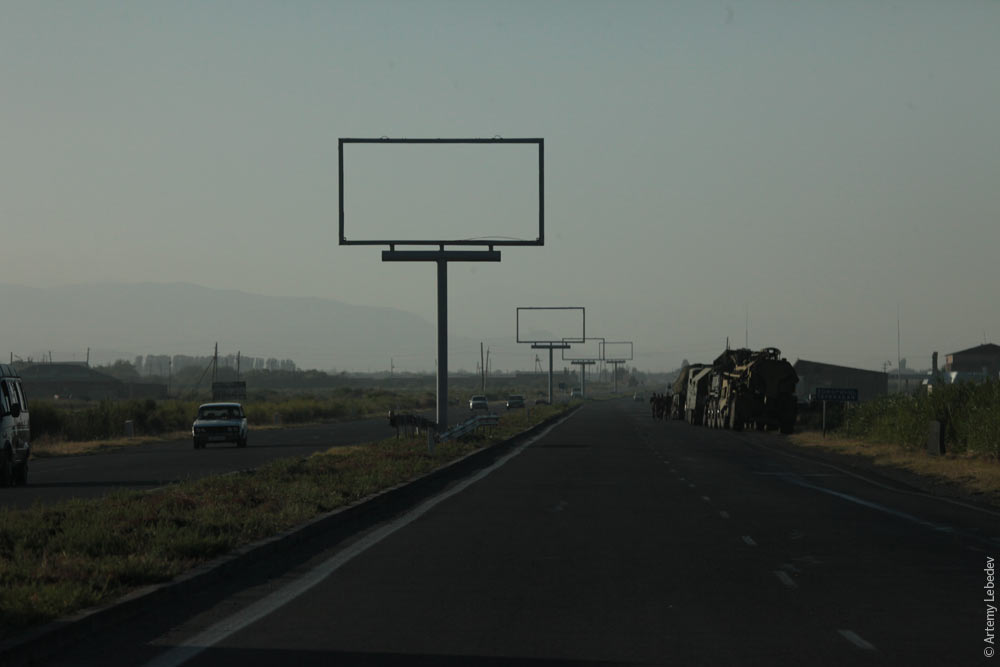 |